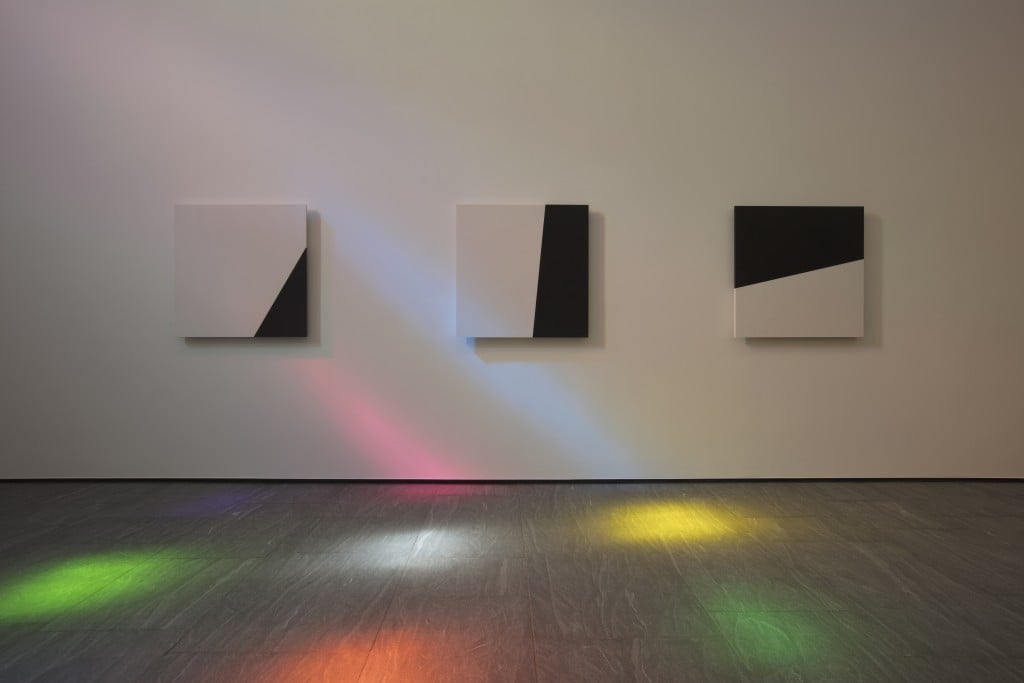Is “Austin” Ellsworth Kelly’s Masterpiece?
ArtandSeek.net February 23, 2018 18Art fans around the world are focused on the Blanton Art Museum at UT-Austin this month. That’s where the last major work by painter Ellsworth Kelly was finally revealed, almost 3 years after his death. For State of the Arts this week, I sat down with Rainey Knudson, editor of online art magazine Glasstire, about the chapel that Kelly wanted to build for more than 30 years.
Rainey, you were at the opening events for the chapel. What’s it like?
Well, the colloquial name on campus among the students is the igloo. It’s a Romanesque cross-shaped building that has stained glass windows on three of the walls. And I will say, it is beautifully constructed, as well it should be for $23 million. The edges of the exterior are crisp, those curves are perfect.
It is incongruous on campus, because it’s next to some of these really ugly concrete buildings on the UT campus, which need a good power-washing frankly. And then you have this little jewel box, pristine, brand new, right next to them.
What’s it like inside?
I was there on a sunny day, and so the light comes in through these rainbow-colored stained glass windows. It’s warm and lovely. And it feels like going to church.
Kelly first made plans for this building decades ago.
Yeah, in 1984. So this guy, Douglas (Cramer) who was the producer of “The Love Boat” and “Dynasty,” and if you think about it in ’84, that was the heyday of those wonderful television shows that I grew up with,
he commissioned Kelly to do a piece. I think he was a big collector of Kelly’s and a big admirer of his work. And so Kelly designed this for his property near Santa Barbara, I think with the idea in this Southern California light, it would be this light filled beautiful space.
How’d it get to Texas?
It came to Texas because a dealer in Houston named Hiram Butler discovered the piece through his friendship with Ellsworth Kelly and championed it. And actually initially brought it to Rice University in Houston, and they passed on it.. And so then it went to UT-Austin. And they were excited to do it and they raised the money to do it.

Ellsworth Kelly’s Austin at the Blanton Museum of Art in Austin, Texas
How does this compare with the Rothko Chapel in Houston?
Well, I’ve written about the Rothko chapel in the past, and I’m not a fan of it. I call it the last gasp of a suicidal imagination, because it’s very, very dark. I think the Rothko chapel is about death and about a very sort of specific idea about death being this black, calm notion of infinitude. I think that’s what it’s trying to get at.
It does have an emotional impact, a visceral emotional impact. And perhaps that’s why I’ve never been a big fan of it, because I think it’s a gloomy, visceral, emotional impact.
The Ellsworth Kelly chapel just feels like going into a pretty church. What’s interesting about it is, Ellsworth Kelly was atheist. He was not a religious person. In fact, he did not want this chapel to go to a Catholic university at one point, because they insisted it would be consecrated if they did.
And so I think he wanted it to be non-denominational and did not want it to be Christian. And yet, it is very much drawing explicitly on this Christian tradition, this Christian architectural tradition.

Ellsworth Kelly’s Austin at the Blanton Museum of Art in Austin, Texas
The New York Times is calling this Kelly’s masterpiece. What do you think?
Well, it’s certainly Kelly’s big expensive building, compared to other things. When you start to understand what his great project was, which was looking at the world and distilling the forms and colors of the world into these shapes that maybe was the way a shadow fell on a door frame, or in a corner or something, and you start to [realize], “Oh that’s what he was looking at, that’s what he was thinking about.” There’s something very distilled and beautiful about his work. And to me, the shaped canvases, and his works on paper, which I admire very much, are to me, his very great legacy. And I think the chapel is fine. And very fancy.
And I will say, I saw it both during the daytime and at night. And when I walked out of the chapel at night and saw that view, straight down Congress Avenue to the Texas State Capitol, all lit up, beautiful, I love the Texas State Capitol, there was, dare I say, a certain magic in that. And I would say even there’s an architectural conversation going on between those two buildings, both of which draw upon incredibly classical ideas, forms, of architecture.











